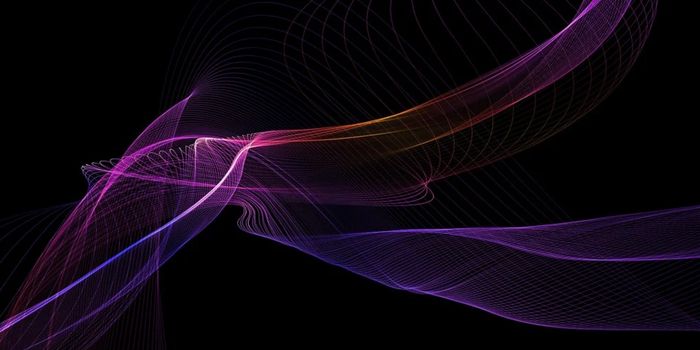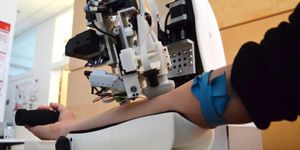Zigzagging DNA
Cells have to store the entire genome in an organelle called the nucleus, and this lengthy DNA molecule has to be carefully packaged by proteins to fit properly inside. While it may just look like a clumpy mass, intricate processes ensure that it is replicated exactly and then divided evenly during cell division so that the resulting daughter cells each get a complete copy of the genome. Scientists know that a protein called condensin plays a critical role in this process, and now scientists have learned more about its function.
In February 2018, a team of scientists showed how the condensin protein can force a loop out, or extrude a loop of DNA. Follow up work by this team has shown that condensin can also help form a totally different loop structure called the Z-loop. Reporting in Nature, they have demonstrated that condensins interact to fold up DNA into a structure with a zigzag shape.
"It started with the question of whether DNA can be folded into a compact chromosome by means of single loops, or whether there is more to it," said TU Delft postdoctoral fellow Dr. Eugene Kim. "We wanted to see several condensins at the same time. During the experiments, we discovered an interesting new form of folded DNA, which clearly differs from a single loop, and which surprisingly also occurs much more often than those loops. We were able to figure out experimentally that DNA is folded in a kind of zigzag structure. We named these structures Z-loops since the DNA is folded in the form of the letter Z."
"It wasn't predicted at all," added Kim.
"The creation of a Z-shaped structure begins when one condensin lands on DNA and makes a single loop. Then, a second condensin binds within that loop and starts to make its own loop, creating a loop in a loop. When the two condensins meet during their tug-of-war, something surprising happens: the second condensin hops over the first one and grabs the DNA outside the loop, continuing its way along the DNA," explained research leader Professor Cees Dekker. "We were very surprised that condensin complexes can pass each other. This is completely at odds with current models, which assume that condensins block each other when they meet."
Packaged in cells, DNA can be challenging to study, and the loop extrusion process is difficult to observe. In this work, the researchers attached the ends of a single molecule of DNA to a glass surface, then used fluorescent tags to label the condensin proteins and DNA. The application of liquid made the DNA take on a U-shape, and the scientists visualized it in a microscope.
Dysfunction in the condensin proteins have been connected to disease, and this work may help us learn more about those disorders as well as the basic mechanisms underlying DNA packaging and organization.
Sources: AAAS/Eurekalert! via Delft University of Technology, Nature








